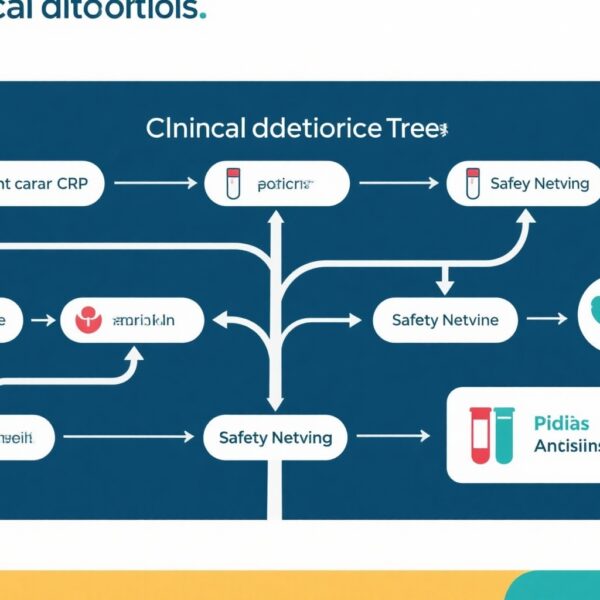Highlight
– Vericiguat reduces the composite risk of cardiovascular death or heart failure hospitalization in patients with HFrEF across a broad risk spectrum.
– The pooled analysis from the VICTORIA and VICTOR trials includes diverse populations with and without recent worsening of heart failure.
– Both components of the composite endpoint—cardiovascular death and heart failure hospitalization—showed statistically significant reductions.
– These findings support vericiguat as an additional treatment option in contemporary guideline-directed medical therapy for HFrEF.
Study Background
Heart failure with reduced ejection fraction (HFrEF) remains a major global health burden characterized by high morbidity and mortality despite advances in therapy. Patients with HFrEF often experience episodes of clinical worsening, which predispose them to a heightened risk of adverse outcomes, including hospitalization and death. Existing guideline-directed medical therapies (GDMT) have significantly improved survival and quality of life, yet residual risk persists, highlighting the need for additional treatment approaches.
Vericiguat, an oral soluble guanylate cyclase stimulator, was initially investigated in the VICTORIA trial among patients with HFrEF who had recently experienced worsening heart failure events. Following positive results showing benefit in this high-risk group, vericiguat received regulatory approval and guideline class IIb recommendations in Europe and North America. The subsequent VICTOR trial explored its use in a lower-risk population without recent worsening, providing an opportunity to evaluate the drug’s utility across the broader spectrum of HFrEF severity.
Study Design
This pooled individual participant data analysis integrates findings from two large, international randomized controlled trials: VICTORIA and VICTOR.
- VICTORIA Trial: Enrolled adults (≥18 years) with chronic HFrEF, a recent worsening event defined by hospitalization within six months or outpatient intravenous diuretics within three months, along with elevated NT-proBNP levels. Conducted from September 2016 to September 2019 across 42 countries.
- VICTOR Trial: Included a similar HFrEF population but without recent heart failure worsening. Conducted from November 2021 to February 2025 across 36 countries.
In both trials, participants received vericiguat or placebo in addition to contemporary GDMT as per clinical guidelines. The primary composite endpoint in both studies was time to first event of cardiovascular death or hospitalization for heart failure. Secondary endpoints included the individual components of this composite.
Key Findings
The pooled analysis comprised 11,155 patients: 5,050 from VICTORIA and 6,105 from VICTOR. Baseline characteristics varied according to trial inclusion criteria but collectively represented a wide clinical spectrum of HFrEF severity.
Primary Outcome: The composite endpoint of cardiovascular death or heart failure hospitalization occurred in 25.9% of patients treated with vericiguat versus 27.9% with placebo. This translated into a statistically significant hazard ratio (HR) of 0.91 (95% CI, 0.85–0.98; p=0.0088), indicating a 9% relative risk reduction.
Individual Components: Vericiguat also showed significant benefit in reducing cardiovascular death alone (HR 0.89; 95% CI, 0.80–0.98; p=0.020) and first hospitalization for heart failure (HR 0.92; 95% CI, 0.84–1.00; p=0.043).
The benefit was consistent across both trials, supporting efficacy both in patients with recent worsening events and those with stable chronic HFrEF. Importantly, all patients were receiving state-of-the-art GDMT, suggesting that vericiguat adds incremental clinical benefit when layered onto modern treatment backbones.
Safety: Both trials reported that vericiguat was generally well tolerated, with adverse event rates comparable to placebo, consistent with prior safety data on the drug.
Expert Commentary
The combined data from VICTORIA and VICTOR provide compelling evidence that vericiguat improves key clinical outcomes across the risk spectrum of HFrEF. Its mechanism of stimulating soluble guanylate cyclase and enhancing cyclic GMP signaling may offer unique cardiovascular benefits, complementary to neurohormonal blockade achieved by other agents.
However, the absolute risk reductions are modest, and the class IIb recommendation reflects the need for careful patient selection. Vericiguat represents an important therapeutic advancement especially for patients who remain at risk despite GDMT, including those unable to tolerate or access newer therapies like SGLT2 inhibitors or ARNIs.
Study limitations include differing enrollment criteria between VICTORIA and VICTOR and their temporal separation, which may affect generalizability. Nevertheless, the pooling of individual participant data allowed robust subgroup analyses and reinforced the reproducibility of benefits.
Conclusion
Vericiguat significantly reduces the risk of cardiovascular death and heart failure hospitalization in patients with HFrEF across a diverse clinical spectrum, including those with and without recent worsening events. These findings support its role as an additional therapeutic option on top of contemporary guideline-directed medical therapy for improving heart failure outcomes. Ongoing real-world study and cost-effectiveness evaluations will be important as vericiguat integrates into clinical practice.
References
1. Zannad F, O’Connor CM, Butler J, et al. Vericiguat for patients with heart failure and reduced ejection fraction across the risk spectrum: an individual participant data analysis of the VICTORIA and VICTOR trials. Lancet. 2025;406(10510):1351-1362. doi:10.1016/S0140-6736(25)01682-4.
2. McMurray JJV, Packer M, Desai AS, et al. A heart failure drug treatment update: contemporary approaches. N Engl J Med. 2021;384(5):455-466.
3. Ponikowski P, Voors AA, Anker SD, et al. 2021 ESC Guidelines for the diagnosis and treatment of acute and chronic heart failure. Eur Heart J. 2022;43(10):3599-3726.



